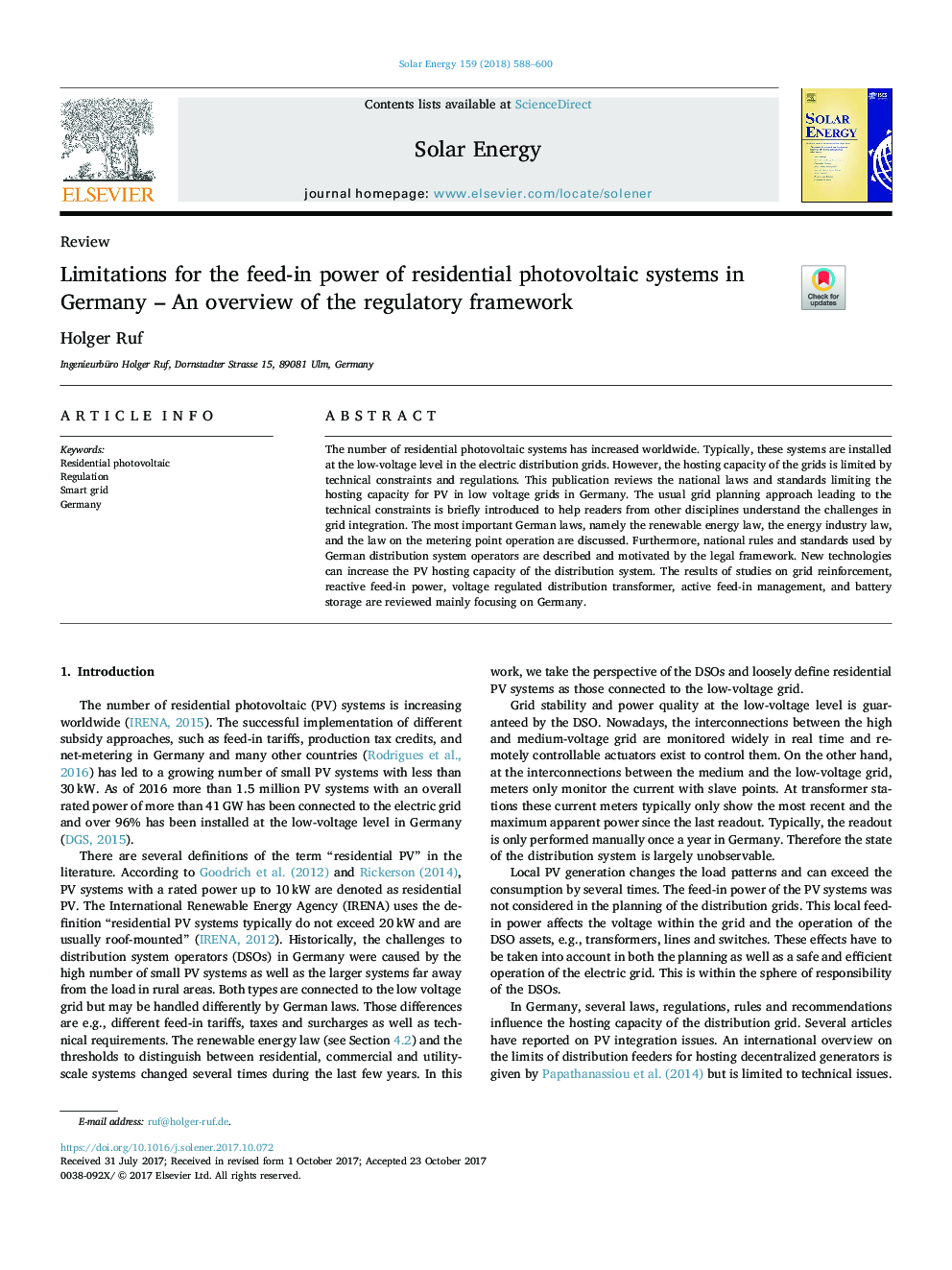| Article ID | Journal | Published Year | Pages | File Type |
|---|---|---|---|---|
| 7936207 | Solar Energy | 2018 | 13 Pages |
Abstract
The number of residential photovoltaic systems has increased worldwide. Typically, these systems are installed at the low-voltage level in the electric distribution grids. However, the hosting capacity of the grids is limited by technical constraints and regulations. This publication reviews the national laws and standards limiting the hosting capacity for PV in low voltage grids in Germany. The usual grid planning approach leading to the technical constraints is briefly introduced to help readers from other disciplines understand the challenges in grid integration. The most important German laws, namely the renewable energy law, the energy industry law, and the law on the metering point operation are discussed. Furthermore, national rules and standards used by German distribution system operators are described and motivated by the legal framework. New technologies can increase the PV hosting capacity of the distribution system. The results of studies on grid reinforcement, reactive feed-in power, voltage regulated distribution transformer, active feed-in management, and battery storage are reviewed mainly focusing on Germany.
Keywords
Related Topics
Physical Sciences and Engineering
Energy
Renewable Energy, Sustainability and the Environment
Authors
Holger Ruf,
